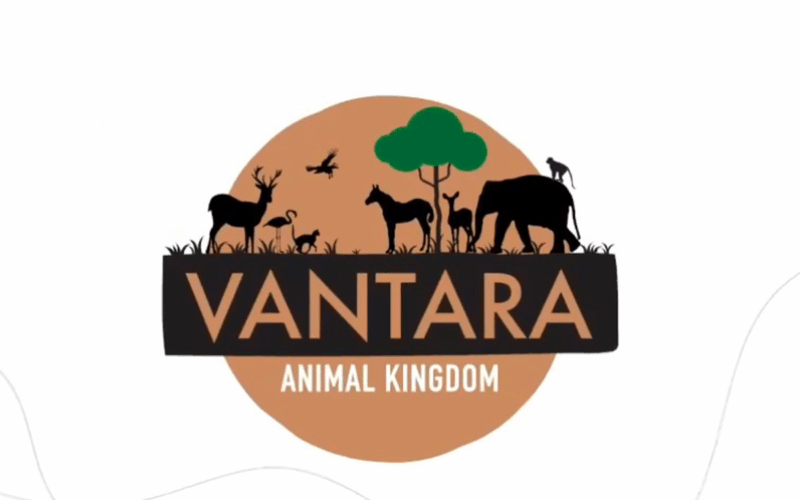#BardaSanctuary #Vantara #WildlifeConservation #ChitalReintroduction #Biodiversity #AnantAmbani #GujaratForestDepartment #WildlifeIndia #Ecology #SustainableFuture #HabitatRestoration
Porbandar (Gujarat): In a landmark move to strengthen biodiversity and ecological resilience, the Gujarat Forest Department, in collaboration with Vantara, has successfully reintroduced 33 spotted deer (Axis axis), also known as chital, into the Barda Wildlife Sanctuary. The initiative marks a new chapter in the restoration of native species and highlights the role of public-private partnerships in conservation.
The Translocation Effort
The deer were translocated from Vantara’s ex-situ conservation facility in Jamnagar. To ensure animal safety and welfare, they were transported in specially designed ambulances, equipped with monitoring systems and veterinary support. Upon arrival, the deer were released into designated zones within Barda Sanctuary under the close supervision of forest officials.
Vantara, a leading wildlife rescue and conservation initiative founded by Anant Ambani, played a crucial role by providing technical expertise, logistical support, and veterinary care. The release followed comprehensive ecological suitability assessments, ensuring that the sanctuary was adequately prepared to support the reintroduced population.
Scientific Rationale and Vision
Dr. Brij Kishor Gupta, Director of the Greens Zoological, Rescue and Rehabilitation Centre under Vantara, emphasized the ecological significance of the initiative:
“This marks a pivotal step in restoring the biodiversity of Barda Wildlife Sanctuary. Spotted deer have historically inhabited this landscape, and their scientifically guided reintroduction is not only ecologically important but also part of a broader vision for habitat revitalization. The Gujarat Forest Department’s proactive approach, coupled with collaborative support from Vantara, demonstrates the transformative potential of partnerships in conservation.”
Dr. Gupta highlighted that such reintroductions restore trophic balance, help rebuild prey bases for predators, and ensure healthier ecosystem functioning.
About Barda Wildlife Sanctuary
Spread over 192.31 square kilometers in Porbandar district, Barda Wildlife Sanctuary is known for its rich mosaic of habitats, from grasslands to dry deciduous forests. It supports a wide variety of species, including:
-
Apex predators: Leopards.
-
Mesopredators: Hyenas, wolves, jackals, and wild boars.
-
Herbivores: Blue bulls (nilgai), with historically thriving populations of sambar, chital, and chinkara.
-
Birdlife: Rare raptors such as the spotted eagle and crested hawk-eagle, alongside other forest-dependent species.
Despite its biological richness, the sanctuary has witnessed a decline in native ungulate populations over the years, largely due to habitat fragmentation, poaching, and ecological stress. This has disrupted ecological balance, particularly predator-prey dynamics.
Restoring Ecological Balance
The reintroduction of spotted deer is part of a larger species recovery plan by the Gujarat Forest Department. By restoring herbivore populations like chital and sambar, the department aims to:
-
Strengthen the prey base for carnivores such as leopards and hyenas.
-
Re-establish ecological functions disrupted by population declines.
-
Enhance biodiversity resilience in the face of climate change and human pressures.
The sanctuary’s intact habitat structure and assessed carrying capacity make it well-suited for such reintroductions, offering hope for long-term population stability.
A Model for Conservation Partnerships
The initiative reflects a broader trend of government-led conservation strengthened through collaborations with private and non-governmental organizations. Vantara’s contribution—spanning veterinary care, transport logistics, and scientific input—complements the Forest Department’s policy framework and management expertise.
This partnership is seen as a model for conservation in India, where pooling public resources with private expertise can accelerate wildlife restoration. By working together, stakeholders aim to:
-
Enhance ecosystem health through science-based interventions.
-
Safeguard endangered and vulnerable species in fragmented landscapes.
-
Inspire similar efforts nationwide, particularly in sanctuaries facing ecological degradation.
Looking Ahead
The successful release of 33 chital is only the beginning. Long-term monitoring will track their adaptation, survival, and reproduction within Barda. Ecologists believe that if the population establishes successfully, it will pave the way for additional reintroductions of other species, including sambar and chinkara, both of which historically roamed the sanctuary in large numbers.
In the coming years, Barda could become a model conservation landscape, showcasing how science-driven wildlife management and partnerships between government and private initiatives can rebuild ecological integrity.
Conclusion
The reintroduction of spotted deer into Barda Wildlife Sanctuary stands as a symbol of hope for India’s conservation movement. It illustrates the power of collaboration, the importance of science-based planning, and the urgency of restoring degraded ecosystems. As human-wildlife interactions intensify across India, such initiatives reaffirm the nation’s commitment to safeguarding its natural heritage for future generations.
With Gujarat Forest Department and Vantara joining hands, Barda may once again witness thriving populations of deer and predators, reinforcing its role as a vibrant refuge for India’s wildlife.
🔖 Hashtags
#BardaSanctuary #Vantara #WildlifeConservation #ChitalReintroduction #Biodiversity #AnantAmbani #GujaratForestDepartment #WildlifeIndia #Ecology #SustainableFuture #HabitatRestoration #ConservationPartnerships

